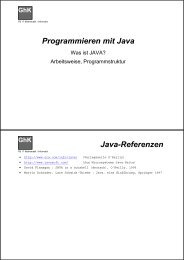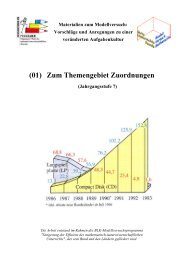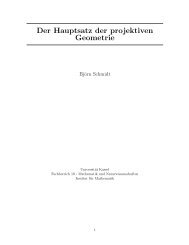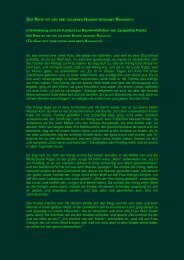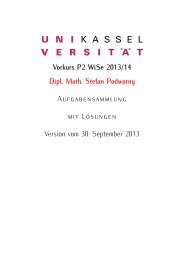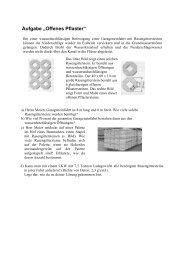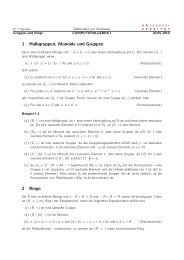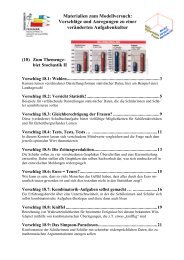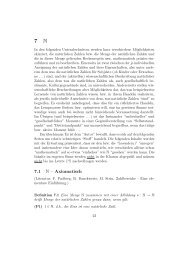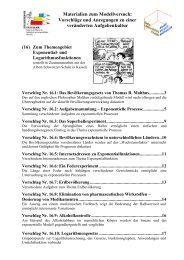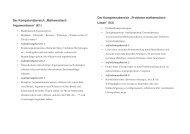Solving Differential Equations in Terms of Bessel Functions
Solving Differential Equations in Terms of Bessel Functions
Solving Differential Equations in Terms of Bessel Functions
Create successful ePaper yourself
Turn your PDF publications into a flip-book with our unique Google optimized e-Paper software.
18 CHAPTER 1. PRELIMINARIES<br />
Lemma 1.22 The <strong>Bessel</strong> functions satisfy<br />
Jν+1(x) = 2ν<br />
x Jν(x) − Jν−1(x), J ′ ν(x) = ν<br />
x Jν(x) − Jν+1(x) (1.19)<br />
and similarly the modified <strong>Bessel</strong> functions satisfy<br />
Iν+1(x) = Iν−1(x) − 2ν<br />
x Iν(x), I ′ ν(x) = ν<br />
x Iν(x) + Iν+1(x). (1.20)<br />
Moreover, Yν(x) satisfies the same equations as Jν(x) and (−1) ν Kν(x) satisfies<br />
the same equations as Iν(x).<br />
Pro<strong>of</strong>. [2, <strong>Equations</strong> 9.1.27 and 9.6.26]. <br />
The follow<strong>in</strong>g result will be important to f<strong>in</strong>d solutions <strong>of</strong> differential operators.<br />
Corollary 1.23 Consider<br />
S := C(x)Bν + C(x)B ′ ν<br />
(1.21)<br />
where B ′ ν = d dx Bν and Bν is a l<strong>in</strong>ear comb<strong>in</strong>ation <strong>of</strong> either Jν and Yν or Iν and<br />
(−1) ν Kν. The space S is <strong>in</strong>variant under the substitution ν → ν + 1.<br />
Pro<strong>of</strong>. It follows from the last lemma that this is true for each <strong>Bessel</strong> function on<br />
its own. A l<strong>in</strong>ear comb<strong>in</strong>ation <strong>of</strong> Jν and Yν does no harm s<strong>in</strong>ce they satisfy the<br />
same equations. The same holds for a l<strong>in</strong>ear comb<strong>in</strong>ation <strong>of</strong> Iν and (−1) ν Kν. <br />
1.4 Formal Solutions and Generalized Exponents<br />
In this section we will study differential operators with power series coefficients<br />
<strong>in</strong> K = C((x)). In this context the derivation that is usually used is δ = x d dx .<br />
Def<strong>in</strong>ition 1.24 A universal extension U <strong>of</strong> K is a m<strong>in</strong>imal (simple) differential<br />
r<strong>in</strong>g <strong>in</strong> which every operator L ∈ K[∂] has precisely deg(L) C-l<strong>in</strong>ear <strong>in</strong>dependent<br />
solutions.<br />
Theorem 1.25 The universal extension U <strong>of</strong> K is unique and has the form<br />
U = K[{x a }a∈M,{e(q)}q∈Q,l], (1.22)<br />
where M ⊂ C is such that M ⊕ Q = C and Q := ∪m≥1x −1/m C[[x −1/m ]]. Here K<br />
denotes an algebraic closure <strong>of</strong> K and the follow<strong>in</strong>g rules hold:



